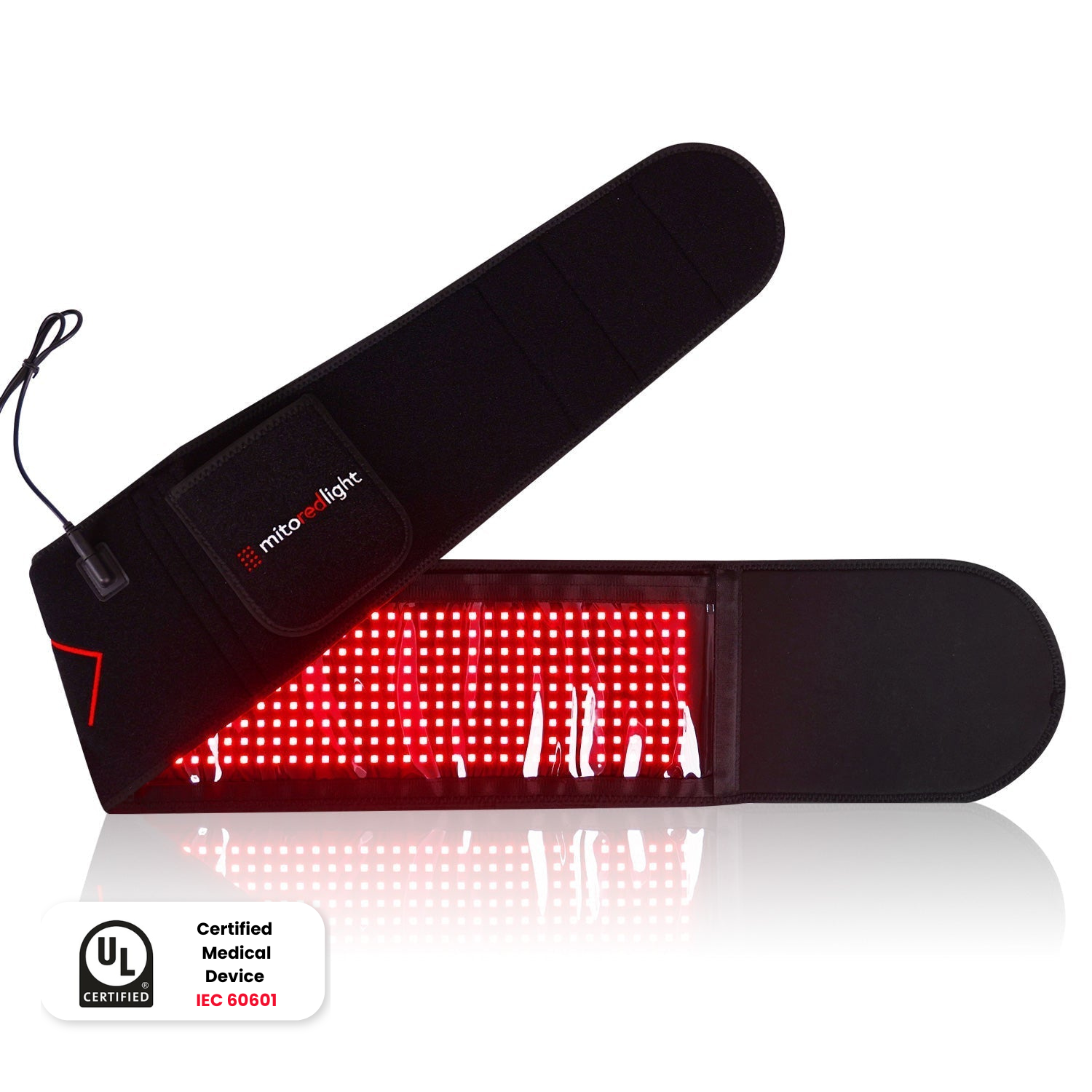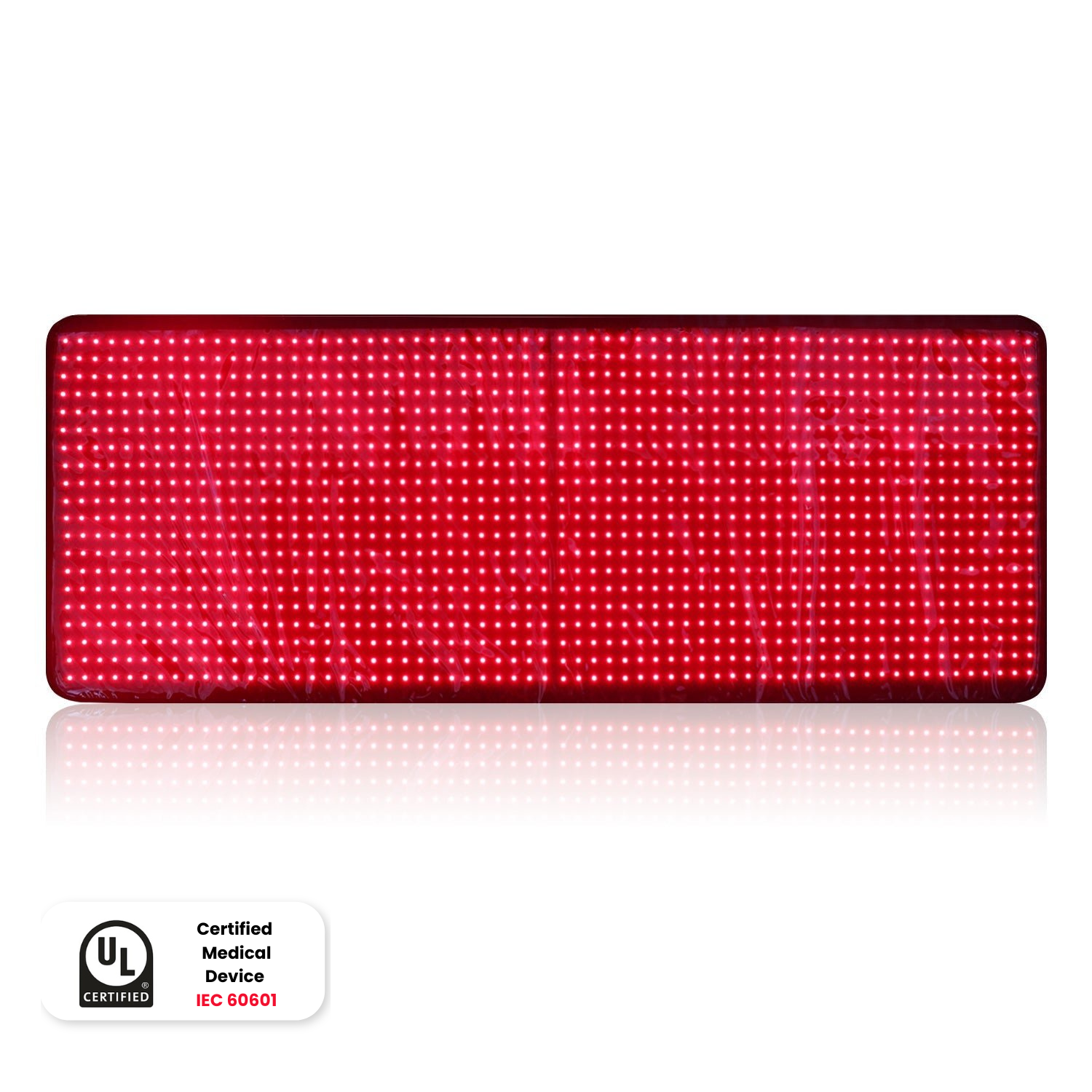DISCLAIMER: Mito Red Light devices are Class II wellness devices aimed at affecting the body through topical heating and supporting cellular function. The information provided in this article and on this site is for educational purposes only and is not intended to imply effectiveness of Mito Red Light devices for any specific application. The information provided in this article and on this site is not intended to diagnose, treat, cure, or prevent any disease, is not a substitute for consultation with a licensed medical provider and should not be construed as medical advice. Click here to read our article on potential contraindications of red light therapy..
The issues of irradiance, Red Light Therapy dosing and just plain making sense of all of the various light meter measurements on the interwebs seems to be an ongoing source of confusion. We have penned this article to hopefully provide more clarity on this issue.
Firstly, we have repeatedly discussed our concerns with other companies’ stated irradiance and consumer light meter (solar meter) measurements in general in our Red Light Therapy Buyer’s Guide and in our other articles here and here and now, yet again, in this article.
Often customers will ask us to compare our devices with devices from other companies. We explain quite directly that this is quite difficult to do in any meaningful way. For starters, the stated irradiance figures from other companies can be 1) factually inaccurate (ie false) or 2) factually accurate but not particularly informative without (at a minimum) knowing what measurement device was used. The only comparisons we've previously referenced involve 1) a comparison against a product from a very well known company in the RLT space where the data was collected by the same professional testing company, at the same laboratory, and by the same engineers! and 2) a side-by-side comparison that was done by a well-known blogger using the same spectrometer on several lights in the same environment.
But with respect to consumer level (solar) light meters, as we’ve demonstrated, measurements can vary a great deal even with the same brand of meter! Recently we’ve seen companies advertising irradiance figures on the order of 200-250mw/cm2 at 6 inches which is quite high! This is almost certainly the result of testing with the most gracious of measurement devices. A full summary of consumer level light meter (solar meter) readings of our devices is presented in Appendix A.
With companies advertising irradiance at 6 inches at or above 200mW/cm2, one is left to wonder – how high is too high? More on this later….
With other companies presenting only (questionable) consumer level light meter data on their devices, we are one of the few companies in the industry that has published independent professional testing data. That data can be found here, here and here. The net-net is that our various series of lights are putting out ~2.0-3.5 J/cm2 per minute. This is the data that we repeatedly reference and that drives the usage guidelines outlined in our USER MANUAL.
However, as a reference point and for comparison purposes we also provide irradiance data with readily available and inexpensive consumer light meters. It is important that we again stress, as we have already discussed in the article here, and the video here (8:30), these measurements are NOT meant to drive dosage recommendations. They are provided as a simple reference point to help consumers make quick and simple comparisons across various devices. We feel providing this information is useful and additive.
With respect to dosage, again our usage guidelines are driven by our professional 3rd party laboratory testing and are simple and straightforward. For regular use, we recommend starting at a few minutes and working up to ~10 minute sessions (per body area).
Furthermore we believe our customers are best served by understanding the following:
- High level of how Red Light Therapy works
- Basic understanding of the biphasic dose response and that more is not necessarily better
- Listening to their bodies and making situation specific adjustments as needed
- Consulting their licensed medical provider as needed
Based on our almost 3 years experience in this industry, rapidly approaching almost 20,000 lifetime customers and 600 reviews, we believe this simple guidance is going to yield the maximum benefit to the maximum number of people. We believe that our customers are best served by understanding the above as opposed to being given overly prescriptive dosage recommendations or “dosage calculators”. The reality is that as individuals we are all different. What is “right” for one person, may not be “right” for another. What is “right” for one person may change over time.
We see other companies in the space offering very prescriptive guidance based on “dosage calculators” that they have cobbled together. We view these “dosage calculators” as excellent examples of false precision and the illusion of knowledge. We disagree with using peak irradiance measurements (from any measurement device) to formulate one-size-fits-all dosage recommendations.
Furthermore, when we consider the ‘risk vs. benefit’ scale we view the scale tipping decidedly toward risk if a RLT user dogmatically follows some online calculator vs listening to their own bodies. We see the scale tip toward risk, if the user does not understand the basics of how RLT works, the biphasic dose response and that often, less is more.

Irrespective of the meter used, ad hoc irradiance measurements are of limited utility. The ONLY way to properly measure the total output of a light therapy panel is through professional diagnostic testing in a controlled laboratory setting.
Irradiance - Joules - Fluence - What Should You Know?
The two metrics that matter most in red light therapy are the power density (irradiance) measured in mW/cm2 and the energy density (fluence) measured in J/cm2.
One factor that often gets overlooked is that optimizing red light therapy is not just about the TOTAL energy delivered (ie joules) but the RATE (or intensity) at which that energy is delivered.
Here is an analogy – suppose we are getting ready to cook Thanksgiving dinner. One person states that we need to start cooking the turkey and the directions say to cook the turkey at 400 degrees for 4 hours.
Another person chimes in and says that the guests will be arriving soon, so we should cook the turkey at 800 degrees for 2 hours.
In both instances the turkey will be exposed to 1,600 ‘degree hours’ but the outcome will be completely different. In the first scenario, we'd end up with a delicious, juicy turkey. In the latter scenario, we’d have a large charcoal briquet and a visit from the fire department. And if we instead tried to cook for 16 hours at 100 degrees our Butterball would still be frozen on the inside.
With respect to proper dosing and safety, a 2018 paper by Hamblin et al, does a deep dive on the topic of PBM dosing and safety parameters. As far as safety the authors state:
"The irradiance values, that produce unacceptable heating of the tissue, are governed by the wavelength and are at 800 to 900 nm, about at 600 to 700 nm, and as low as at 400 to 500 nm."
In reviewing the RLT literature, the window of maximum benefit appears to be in the range of 5-50 Joules (dependent on several factors). Mito Red panels are designed to deliver the optimum total amount of Joules, at a high energy density (fluence / J/cm2) that results in a very reasonable time investment (5-15 minutes) but still maintains a significant margin of safety. Consumer safety is our highest priority.
Bottom Line: If a company is not doing professional diagnostic testing, they are not going to be able to accurately inform you of what temperature you are cooking your turkey.
But does also sharing consumer level light meter measurements confuse consumers?
No. Our view is that more information is better than less assuming the information is clearly presented.
But does sharing consumer level light meter measurements increase the risk for harm?
No. In fact, it is just the opposite.
The reality is this: if a customer chooses to ignore our usage guidelines and attempts to calculate dosage with consumer level light meter measurements and a dosage calculator found somewhere on the interwebs -> this would imply a shorter session duration time - thereby reducing RISK (of which there is already minimal as explained above). It’s not complicated – it’s simple math.
Again we recommend following the guidance in our USER MANUAL as we believe this simple guidance is going to yield the maximum benefit to the maximum amount of people.
At Mito Red we are continuously evaluating how we can better communicate product and educational information to our customers. As we have stated often, RLT is not as complicated as many would aim to make it out to be.
DISCLAIMER: Mito Red Light devices are Class II wellness devices aimed at affecting the body through topical heating and supporting cellular function. The information provided in this article and on this site is for educational purposes only and is not intended to imply effectiveness of Mito Red Light devices for any specific application. The information provided in this article and on this site is not intended to diagnose, treat, cure, or prevent any disease, is not a substitute for consultation with a licensed medical provider and should not be construed as medical advice. Click here to read our article on potential contraindications of red light therapy..
APPENDIX A - Consumer level (solar) light meter measurement summary. For reference and comparison purposes only.
Mito Red Original
MitoMIN - 115 mW/cm2

MitoMID - 151 mW/cm2

MitoMAX - 155 mW/cm2

MitoMEGA - 167 mW/cm2

MitoMOD Series
MitoMOD 300 - 135 mW/cm2

MitoMOD 600 - 143 mW/cm2

MitoMOD 900 - 146 mW/cm2

MitoPRO Series
MitoPRO 300 - 132 mW/cm2

MitoPRO 750 - 169 mW/cm2

MitoPRO 1500 - 171 mW/cm2

Related Articles:
- What Is Red and Near Infrared (NIR) Light Therapy?
- Red Light Therapy Buyer’s Guide
- Everything You Need to Know About Red Light Therapy and SKIN
DISCLAIMER: Mito Red Light devices are not clinically proven to diagnose, treat, cure, or prevent any medical condition. Mito Red Light devices are Class II wellness devices aimed at affecting the body through topical heating and supporting cellular function. The scientific studies referenced in this article are for informational purposes only and are meant to educate the reader on the exciting and growing field of phototherapy. Click here to read our article on potential contraindications of red light therapy..































